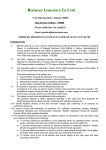Download CU-SP2_Manual_Eng_Ver0.90_Rev.A
Transcript
Instructions for Use i-PAD CU-SP2 The information in these Instructions for Use applies to the i-PAD CU-SP2. This information is subject to change. Please contact CU Medical Systems, Inc. or its authorized representatives for information on revisions. Revision History Edition 1 Publication Date: July 2012 Document No.: SP2-OPM-E-01 Published by: CU Medical Systems, Inc. Printed in the Republic of Korea Copyright © 2012 CU Medical Systems, Inc. No part of these Instructions for Use may be reproduced without the permission of CU Medical Systems, Inc. Medical Device Directive The i-PAD CU-SP2 complies with the requirements of the Medical Device Directive 93/42/EEC and its revisions. Important: Quick defibrillation is needed if sudden cardiac arrest (SCA) occurs. Since the chance of success is reduced by 7% to 10% for every minute that defibrillation is delayed, defibrillation must be performed promptly. However, defibrillation may not work on some patients even when administered promptly due to the fundamental causes of SCA. The i-PAD CU-SP2 is manufactured by: CU Medical Systems, Inc. Dongwha Medical Instrument Complex 130-1, Dongwhagongdan-ro, Munmak-eup, Wonju-si, Gangwon-do, 220-801 Republic of Korea Authorized EU Representative Medical Device Safety Service Schiffgraben 41, 30175 Hannover, Germany Contact Us Product and Order Inquiries Overseas Sales Team CU Medical Systems, Inc. 5F, Cheonggye Plaza, 991-4, Cheonggye, Uiwang, Gyeonggi, Republic of Korea Tel : +82 31 421 9700 / Fax: +82 31 421 9911 E-mail addresses : [email protected] Branch Office of CU Medical Systems, Inc. in Germany Kuester Strasse 6, 30519 Hannover, Germany Tel / Fax: +49 511 848 6054 Service and Technical Support Customer Service Team CU Medical Systems, Inc. 5F, Cheonggye Plaza, 991-4, Cheonggye, Uiwang, Gyeonggi, Republic of Korea Tel : +82 31 421 9700 / Fax: +82 31 421 9911 E-mail addresses : [email protected] 2 3 Table of Contents Introduction ................................................................................................................................. 7 Overview ...................................................................................................................................... 8 1. Product Information ........................................................................................................... 9 1.1 Device Description ............................................................................................................. 9 1.2 Indicated Use ..................................................................................................................... 9 1.3 Intended Users .................................................................................................................. 9 1.4 Additional Information ........................................................................................................ 9 2. Device Features ................................................................................................................ 10 3. Preparation for Use .......................................................................................................... 12 3.1 Standard Package Contents ............................................................................................ 12 3.2 Key Accessories .............................................................................................................. 13 3.3 Preparation for Use ......................................................................................................... 14 4. How to Use the i-PAD CU-SP2......................................................................................... 16 4.1 LCD Screen ..................................................................................................................... 16 4.2 Soft Keys ......................................................................................................................... 19 4.3 Procedure for Using the Device ....................................................................................... 21 4.4 Preparation for Defibrillation ............................................................................................ 22 4.5 Defibrillation in Adult Mode .............................................................................................. 25 Step 1: Place pads on the patient. ........................................................................................ 25 Step 2: Press the Shock Button when instructed. ................................................................. 26 Step 3: Perform CPR. ............................................................................................................ 28 4.6 Defibrillation in Pediatric Mode ........................................................................................ 30 4.7 Printer .............................................................................................................................. 31 4.8 Monitor Mode ................................................................................................................... 32 4.9 CU-EM1 (ECG Transmission Device) ............................................................................. 34 4.9.1 Device Features ...................................................................................................... 34 4.9.2 Button and Indicators .............................................................................................. 35 4.9.3 Beeper .................................................................................................................... 35 4.9.4 How to Use the CU-EM1 ......................................................................................... 36 4.9.5 Where to Attach ECG Pads .................................................................................... 36 4 4.10 Manual Override (Not Option) ......................................................................................... 37 4.10.1 Changing the Energy Value .................................................................................... 37 4.10.2 Charging the Device and Administering Electric Shock Treatment ........................ 38 4.10.3 Using R-Sync .......................................................................................................... 39 5. After Using the i-PAD CU-SP2 ......................................................................................... 41 5.1 Maintenance After Each Use ........................................................................................... 41 5.2 Saving and Transferring Treatment Data ........................................................................ 42 5.2.1 Device Usage .......................................................................................................... 42 5.2.2 Transferring Treatment Data ................................................................................... 42 5.3 Data Review .................................................................................................................... 46 5.3.1 Event List ................................................................................................................ 47 5.3.2 ECG ........................................................................................................................ 48 5.3.3 Segment Print ......................................................................................................... 48 5.3.4 Print All .................................................................................................................... 49 5.4 Device Setup ................................................................................................................... 50 5.4.1 Configuring the Menu Mode .................................................................................... 50 5.4.2 Setting the Operation of the Device ........................................................................ 51 5.4.3 Setting the CPR Guidance ...................................................................................... 58 6. Maintenance ...................................................................................................................... 60 6.1 Device Storage ................................................................................................................ 60 6.2 Maintenance .................................................................................................................... 62 6.2.1 Device Inspection .................................................................................................... 62 6.2.2 Recharging and Replacing the Battery ................................................................... 62 6.2.3 Replacing the Pads ................................................................................................. 67 6.2.4 Cleaning the i-PAD CU-SP2 ................................................................................... 68 6.2.5 Disposal .................................................................................................................. 68 7. Troubleshooting ............................................................................................................... 69 7.1 Self-Tests ........................................................................................................................ 69 7.2 Device Status .................................................................................................................. 71 7.3 Troubleshooting ............................................................................................................... 72 8. Device Service .................................................................................................................. 73 5 A. Parts and Accessories ..................................................................................................... 75 A.1 Standard Accessories ........................................................................................................ 75 A.2 Optional Accessories ......................................................................................................... 75 B. Description of Symbols ................................................................................................... 76 B.1 CU-SP2 Defibrillator........................................................................................................... 76 B.2 CU-SP2 Packaging ............................................................................................................ 77 B.3 Accessories........................................................................................................................ 78 B.3.1 Rechargeable Battery Pack ......................................................................................... 78 B.3.2 Pads ............................................................................................................................. 79 C. Glossary ............................................................................................................................ 80 D. Device Specifications....................................................................................................... 85 E. Electromagnetic Compatibility ........................................................................................ 95 6 Introduction These Instructions for Use contain information necessary for the correct use of this device. Please contact us regarding any questions or issues on the use of the device arising from information found in these Instructions for Use [Chapter 8: Device Service]. The company or its authorized distributor is not responsible for any injury incurred by the user or patient due to any apparent negligence or improper use by the user. Hereinafter, "Device" refers to [CU-SP2], "We" or “Us" refers to CU Medical Systems, Inc., "Pads" refers to disposable defibrillation electrode pads for adult or pediatric modes, and "Battery Pack" refers to the rechargeable or disposable battery pack. These Instructions for Use emphasize the safety procedures and precautions for the device use by using the terms below. Please acquaint yourself with the warnings, cautions and references stated in these Instructions for Use in order to safely use the device. Conditions, hazards, or unsafe practices that can result in serious personal injury or loss of life. Conditions, hazards, or unsafe practices that can result in minor or moderate personal injury, damage to the device, or loss of treatment data stored in the device, particularly if precautionary steps are not taken. Used to denote items that are important during installation, operation, or maintenance of the device. 7 Overview Thank you for purchasing the i-PAD CU-SP2. This device can be effectively and safely used for a long period if you familiarize yourself with the instructions, warnings, precautions, and notices contained in these Instructions for Use prior to its use. This device is a semi-automated external defibrillator that can be administered on sudden cardiac arrest (SCA) patients. A defibrillator discharges electric shock with high voltage and current. You must be wellacquainted with the instructions, warnings, and precautions contained in these Instructions for Use. Users of this device must follow these instructions. You must follow the instructions, warnings, cautions, and notices in these Instructions for Use when using this device. The manufacturer or its authorized distributor will not be responsible for any problems involving the device that are caused by the user's negligence. This device shall be serviced only by the manufacturer or its authorized service centers. The manufacturer or its authorized service centers will not be liable for devices serviced at the user’s own discretion. If the device is intended to be connected to equipment other than that stated in these Instructions for Use, contact the manufacturer. If this device does not operate properly, contact the manufacturer or its authorized service center. 8 1. Product Information 1.1 Device Description CU-SP2 is an easy-to-use Semi-Automated External Defibrillator (AED) that is small, light, and portable, and uses a battery. The AED automatically or manually reads the sudden cardiac arrest (SCA) patient's electrocardiogram (ECG) and determines if a cardiac arrest that requires defibrillation has occurred, so that licensed emergency medical technicians, medical professionals and the general public can easily operate it. SCA can occur anytime to anyone at any place and may threaten the patient's life if the appropriate CPR and/or electric shock with a defibrillator are not applied within a few minutes. 1.2 Indicated Use The i-PAD CU-SP2 is indicated for use on patients that are exhibiting the symptoms of sudden cardiac arrest (SCA) with all of the following signs: No movement and no response when shaken No normal breathing If the patient is suspected of displaying the symptoms above, attach the pads and use the defibrillator according to each step of the voice instructions. 1.3 Intended Users The i-PAD CU-SP2 is intended for use by licensed emergency medical technicians or medical professionals. Also, the general public untrained in CPR or the use of the defibrillator may use this device according to its settings. However, the manufacturer recommends that inexperienced users complete training in CPR or the use of the defibrillator for quick and systematic emergency treatment. 1.4 Additional Information Please contact CU Medical Systems, Inc. or its local distributors for any additional information on the i-PAD CU-SP2. We will help to answer all of your questions. 9 2. Device Features Graphic LCD Defibrillator Pads Connector Pads Storage Compartment i-Button Power Button Soft Keys IrDA Port SD Card Port Battery Pack Shock Button 10 Power Button Turns the device on or off. (When the device is on, a green LED is lit.) i-Button - Provides the following information by voice and LCD screen • Reports device usage (the total hours of the last usage and number of shocks) • Checks the S/W version • Checks for errors - Transmits event and ECG data through IrDA and SD Card Graphic LCD Displays the current status of the device, user's guide, ECG, heart rate, etc. Shock Button Delivers defibrillating shock when pressed. Defibrillator Pads Connector Connects with the connectors of the pads. Battery Pack The rechargeable (disposable is optional) power source of the device. IrDA Port Transmits and receives treatment data between the device and a personal computer. SD Card (External Memory) Port for copying device records to an SD card. Port Soft Keys Three buttons that control device settings and movements. Pads Storage Stores pads. Compartment 11 3. Preparation for Use 3.1 Standard Package Contents The following are the standard package contents of this device. CU-SP2 Semi-automated External Defibrillator Instructions for Use 1 Battery Pack (Rechargeable) 1 Pack of Adult Pads (Disposable) Battery Charge Dock Battery Charger 12 3.2 Key Accessories 1 Pack of Pediatric Pads IrDA Adapter 1 Battery Pack (Disposable) SD Card Printer CU-EM1 (ECG Transmission Device) The accessories above are not included in the standard package contents. Please contact us after referring to [Appendix A: Parts and Accessories] for additional supplies. Please keep spare pads and battery packs handy to quickly respond to emergency situations. 13 3.3 Preparation for Use Do the following to set up the i-PAD CU-SP2. ① Open the package and verify that it contains all the items listed in the packing list. ② Familiarize yourself with the device features by referring to [Chapter 2: Device Features] of these Instructions for Use. ③ Insert the battery pack into the battery compartment on the device as shown in the figures below. As the battery pack is inserted, the device starts a self-test and displays the following on the Monitor LCD. SYSTEM TEST After the self-test is complete, the device will automatically shut down. If the self-test fails, please refer to [Chapter 7: Troubleshooting] of these Instructions for Use. ④ If you have a carrying case, please safely store the device in the carrying case. If you want to purchase the carrying case, please contact us by referring to [Appendix A: Parts and Accessories] of these Instructions for Use. ⑤ Store the device referring to the following considerations. • You must store the defibrillator according to the storage policy. Please refer to [Section 6.1: Device Storage] for proper device storage instructions. • Store the defibrillator in an easy-to-access location where its technical alarms can be easily heard (e.g. alarm on low battery or other device problems). • Store the accessories along with the device in the device’s carrying case for easy and quick access. 14 Electromagnetic interference may affect the performance of the device. While the device is in use, it should be kept away from devices that cause electromagnetic interference. Devices that may cause such interference include motors, X-ray equipment, radio transmitters, and cell phones. Please refer to [Appendix D: Electromagnetic Compatibility] of these Instructions for Use for more information. The use of accessories or cables other than those referred to in these Instructions for Use may increase electromagnetic radiation from the device or reduce the device’s electromagnetic immunity. Only accessories and cables that are authorized by the manufacturer should be used with the i-PAD CU-SP2. 15 4. How to Use the i-PAD CU-SP2 4.1 LCD Screen The configuration of the Graphic LCD Screen is as shown below. The screen configuration can be changed according to the 'Graphic Indication'. For detailed instructions on setting the 'Graphic Indication', please refer to [Section 5.4: Device Setup] of these Instructions for Use. Compression : Breath Ratio Printer / CU-EM1 Connection Status Adult / Pediatric Mode Operation Time No. of Shocks Shock Energy Battery Status Heart Rate Image Guide ECG Text Guide Soft Key - Screen configuration for setting the graphic indication - ECG Text Guide - Screen configuration for unsetting the graphic indication - 16 (Button Description) Image Guide Uses the image to guide the user in operating the device. Operation Time Displays the actual operation time of the device. Printer / CU-EM1 Displayed when using the Printer / CU-EM1. Connection Status Printer: CU-EM1: Adult / Pediatric Mode Changes based on the Adult/Pediatric Mode of the device. Adult: Pediatric: Compression : Breath - Displays the CPR setting of the device. Ratio - Can be changed by pressing the Soft Keys during operation when in Pediatric Mode. - The chest compression number is fixed to 30 when in Adult Mode. No. of Shocks Displays the number of administered shocks. Shock Energy Displays the amount of shock energy administered to the patient. Battery Status Displays the status of the battery in 4 steps. Step 1: - The battery is full. Step 2: - Less than half of the battery is remaining. Step 3: - Less than ¼ of the battery is remaining. Step 4: - The battery is almost depleted. Heart Rate Displays the heart rate of the patient after the pads are attached. ECG Displays the ECG of the patient after the pads are attached. Text Guide Uses the text to guide the user in operating the device. Button Description Describes the functions of the three Soft Keys. 17 The Graphic LCD Screen illustrated in these Instructions for Use may not match the actual screen during operation depending on the device settings. The Printer and CU-EM1 are not a part of the standard package contents. If you want to purchase them, please contact us by referring to [Appendix A: Parts and Accessories] of these Instructions for Use. 18 4.2 Soft Keys There are three Soft Keys in the center of the i-PAD CU-SP2, which operate the device and the menu mode. The Soft Keys operate in two modes: Operation Mode and Menu Mode. When in Operation Mode, the functions of the Soft Keys are changed according to the 'Manual Override'. For further details on 'Manual Override', please refer to [Section 5.4: Device Setup] of these Instructions for Use. - Soft Keys are labeled 1~3 from left to right. Soft Key Functions in Menu Mode Button 1 Moves left/up on the menu. Selects or sets the current item. Button 2 Plays ECG (used when loading previous ECG). Pauses ECG (used when loading previous ECG). Button 3 Moves right/down on the menu. For further details on the Menu Mode and the use of Soft Keys in Menu Mode, please refer to [Section 5.4: Device Setup] of these Instructions for Use. - Soft Keys are labeled 1~3 from left to right. Soft Key Functions in Operation Mode (Before attaching pads on the patient) Button Indication Function When pressed, the i-PAD CU-SP2 will attempt to establish Bluetooth connection to the CU-EM1 (ECG MONITOR MODE transmission device). If successful, the device will operate in Monitor Mode. In Monitor Mode, ECG analysis and shock treatment Button 1 will not be available. The Defibrillation Mode will operate under Monitor SEMI-AUTO Mode. When pressed, the i-PAD CU-SP2 will sever its connection to the CU-EM1 and transition into the Operation Mode, which will enable defibrillation. This function is activated when the 'No. of Chest Compressions' under the CPR setting of the device is Button 2 30:x set to '15 times'. When pressed, the setting will change to '30 times'. (The 'x' refers to the 'No. of Artificial Respirations' under the CPR setting.) 19 This function is activated when the 'No. of Chest Compressions' under the CPR setting of the device is 15:x set to '30 times'. When pressed, the setting will change to '15 times'. (The 'x' refers to the 'No. of Artificial Respirations' under the CPR setting.) When pressed, the device will enter the Menu Mode. Button 3 Menu For further details on the Menu Mode, please refer to [Section 5.4: Device Setup] in these Instructions for Use. - Soft Keys are labeled 1~3 from left to right. Soft Key Functions in Operation Mode (After attaching pads on the patient) Button Indication ANALYZE STOP ANALYZE Button 1 Charge Function When pressed, the device will start analyzing the patient's ECG. This function is activated while the device is analyzing the patient's ECG. When pressed, the device will stop analyzing the patient's ECG. When pressed, the device will start charging energy for administering a shock. This function is activated while the device is charging energy. When DISARM pressed, the device will stop charging and internally discharge the energy stored within the device. This function is activated when the 'No. of Chest Compressions' under the CPR setting of the device is set to '15 times'. When pressed, the 30:x setting will change to '30 times'. (The 'x' refers to the 'No. of Artificial Respirations' under the CPR setting.) Button 2 This function is activated when the 'No. of Chest Compressions' under the CPR setting of the device is set to '30 times'. When pressed, the 15:x setting will change to '15 times'. (The 'x' refers to the 'No. of Artificial Respirations' under the CPR setting.) CPR START Button 3 STOP CPR When pressed, the device will guide you through CPR. This function is activated while the device is guiding you through CPR. When pressed, the device will stop the CPR guidance. 20 For further details on the functions of the Soft Keys, please refer to [Section 4.5: Defibrillation in Adult Mode] and [Section 4.6: Defibrillation in Pediatric Mode] in these Instructions for Use. Button 2 is activated only when the device is set to Pediatric Mode. When 'Manual Override' is set to 'OFF', Soft Keys 1 and 3 will be deactivated after attaching the pads on the patient. 4.3 Procedure for Using the Device If you think that you are witnessing someone suffering sudden cardiac arrest, perform the chain of actions recommended by the Korean Association of Cardiopulmonary Resuscitation (KACPR) and the American Heart Association (AHA) in their Chain of Survival emergency response to sudden cardiac arrest. 1 2 3 4 5 1. Immediate recognition and activation of the emergency response system – Activate the community emergency response system (e.g. call 911 or the equivalent service in your locality). 2. Early CPR – Perform CPR. 3. Early defibrillation – Use this device (i-PAD CU-SP2). Using this device can be summarized in 3 steps: After pressing the Power Button, Step 1: Place pads on the patient. Step 2: Press the Shock Button when instructed by the device. Step 3: Perform CPR. 4. Effective advanced life support – Perform advanced care in order to restore spontaneous circulation. 5. Integrated post-cardiac arrest care – Transfer the patient to a medical institution or a specialized facility. 21 When you witness someone suffering sudden cardiac arrest, you must perform the chain of actions recommended by the Korean Association of Cardiopulmonary Resuscitation (KACPR) and the American Heart Association (AHA) in their Chain of Survival emergency response to sudden cardiac arrest. If finding and/or operating the defibrillator takes time, monitor the patient's status and activate the emergency response system until the defibrillator is available, and perform CPR if necessary. 4.4 Preparation for Defibrillation ① Turn the device on by pressing the Power Button. When the power turns ON the following occurs in sequence: Beeper: The beeper will beep for 1 second. A self-test will be initiated. The device will give voice instructions to call emergency medical services and on the 'Adult/Pediatric Mode'. The guide on how to use the device will be given through the LCD Screen and by voice. Never perform defibrillation in pediatric mode to a patient who is either heavier than 25 kg or older than 8 years old. You can change the adult/pediatric mode under Menu Mode after turning on the i-PAD CUSP2. However, the defibrillation mode should be changed before placing the pads on the patient. Once the pads are in place, you cannot change the defibrillation mode anymore. When the mode is correctly selected, the defibrillation energy is set to an adult value (150 J / 200J) or pediatric value (50 J). For further details on setting the menu, please refer to [Section 5.4: Device Setup] of these Instructions for Use. 22 ② Remove clothes from patient's chest. Time is essential for the cardiac arrest patient. Thus, time should not be wasted in completely removing their clothes. Tear or cut clothes to attach the pads as soon as possible, if removing them will take too much time. Dry the patient's skin such that the pads can adhere well on the chest. Shave chest hair if necessary. Avoid laying the patient on conductive locations, such as metal, an electric pad, and water. ③ Remove the pads package from the Pads Storage Compartment at the bottom of the device. ④ Open the pads package and take out the pads. 23 ⑤ Refer to the pictures on both pads and accurately identify the locations where the pads will be attached. Adult Pads Pediatric Pads The adhesive material on the pads starts to dry out as soon as the package is opened. Use immediately after opening. For procedures on checking the expiration date of the pads and maintaining them, please refer to [Section 6.2: Maintenance] of these Instructions for Use. 24 4.5 Defibrillation in Adult Mode Step 1: Place pads on the patient. ① Remove pad 1 from the single liner and stick the pad to the patient’s upper right chest below the collarbone as shown below. ② Remove pad 2 from the single liner and stick the pad to the patient's left side torso in line with the armpit as shown below. ③ If the device detects the connection to the patient after placing the pads, follow the voice instructions of the device. Defibrillation can be done even if the pads are reversed. If the locations of the pads are switched, follow the next voice instruction without changing the directions of pads. It is more important to begin defibrillation as soon as possible. In the event the pads are not adhering well, check if the adhesive side of the pads is dry. Each pad has an adhesive gel. If the gel does not adhere well, replace it with a new pad. 25 Step 2: Press the Shock Button when instructed. The device acquires and analyzes the patient's ECG immediately after being connected. According to the device settings, automatic analysis will become available, along with ANALYZE and CHARGE. If the device is set to automatic analysis, the device will automatically start analyzing the ECG as soon as the pads are attached to the patient. Do not touch the patient when the device instructs you not to touch the patient. The ECG analysis may become inaccurate if you touch the patient during the analysis. If the patient needs defibrillation after the ECG analysis, the device will do the following: The device announces that a defibrillation shock is needed, and instructs you to keep away from the patient. When armed, the device will continuously beep while the Shock Button flashes in orange. The device instructs you to press the flashing orange Shock Button. You should press the Shock Button at this time. When the Shock Button is pressed, the device delivers a defibrillating shock to the patient. If defibrillation is properly done, the device reports that an electric shock has been delivered. After shock delivery, the device indicates that you may touch the patient and issues voice instructions on CPR. If the flashing Shock Button is not pressed within 15 seconds, the device will cancel the shock delivery and disarm. Then the device issues CPR instructions. 26 If the patient does not need defibrillation, the device will do the following in sequence: The device announces that the patient does not need a defibrillating shock and that you may touch the patient. Then the voice instruction for CPR starts. When administering defibrillation, do not position the patient on conductive fluids. If the patient's skin is wet, remove the moisture prior to using the device. When administering defibrillation, remove all other medical equipment on the patient that is unprotected from the defibrillating shock. The user and everyone near the patient must avoid making the following contacts. • Do not touch any body parts of the patient, such as the body, head, arms, and legs. • Do not touch any conductive fluids, such as gel, blood, and saline. • Do not touch any conductive metal objects, such as a stretcher or wheelchair. Making such contacts may provide unwanted pathways for the defibrillating current. The user must not touch the patient when pressing the Shock Button. The defibrillating shock may harm the user or bystanders. After starting the ECG analysis, the device will continue the analysis up to the point of pressing the Shock Button. When the patient's ECG returns to a state that does not require defibrillation, the device will disarm itself. It will then reanalyze the patient's ECG. As a safety measure, the device will not deliver a shock until the flashing orange Shock Button is pressed. If the Shock Button is not pressed within 15 seconds of the voice instruction to press the Shock Button, the device will disarm itself and instruct you to make sure that emergency medical services have been called. The device will then instruct you to begin CPR. If the device malfunctions during a rescue operation, it will instruct you to get a replacement defibrillator and will start the voice instruction for CPR. Perform CPR until the replacement equipment is ready to use. 27 Step 3: Perform CPR. The user must immediately perform CPR while temporarily suspending emergency treatment on the patient. During this step, the device will give voice instructions for the pause period. When voice instruction for CPR is needed, press the flashing blue i-Button within 15 seconds. For further details on CPR, please refer to the [CPR Method] below. [CPR Method] 1. Compression Point Place the heel of your hand in the middle of the patient's chest between the nipples (which is the lower half of the sternum), and put the heel of your other hand on top of the first so that your hands are overlapping and parallel. Then, spread or lock your fingers without touching the chest. Keep your elbows straight and your arms vertical to the ground, and use your weight to start the compression. 2. Compression Speed and Depth Compress the chest at least 5cm (up to 6cm) deep, and at a rate of at least 100 compressions per minute (up to 120 times). 3. Opening the Airway While lifting the patient's chin up, tilt the head backward to open the airway. 28 4. Artificial Respiration Method Pinch the patient's nose as shown in the figure below, place your mouth over the patient’s mouth, and blow in sufficient air to make the chest rise significantly. After the CPR guidance, the device automatically starts reanalysis of the patient's ECG according to the device settings, or the user can press 'ANALYZE' button to start the reanalysis. Do not touch the patient once the device starts to reanalyze the patient's ECG. If you have not been trained in CPR or are unconfident at administering artificial respiration, you should perform only chest compression or follow the instructions of the emergency medical services’ agent on the phone. If you are trained for CPR and capable of performing artificial respiration, perform chest compression along with artificial respiration. The CPR guidance can be set under Menu Mode. For further details, please refer to [Section 5.4: Device Setup] on these Instructions for Use. In order to safely turn the device off after use, press the Power Button for at least 1 second. 29 4.6 Defibrillation in Pediatric Mode When the patient is between 1 year old and 8 years old, defibrillation can be done using the pediatric pads. When the device is connected through pediatric pads, it automatically sets the defibrillation energy to 50J and provides pediatric CPR guidance. Turn on the device and remove clothes as directed by the voice instructions to expose the patient's chest and back. Place pads on the middle of the chest and back as illustrated below. Pads are not specific to either chest or back. You may attach them regardless of direction. If there are no pediatric pads for the pediatric patient, use adult pads but set the 'Adult/Pediatric Mode' to Pediatric Mode under Menu Mode, and then perform defibrillation according to the voice instructions. Follow the instructions below when giving first aid during a pediatric cardiac arrest. • When giving first aid during a pediatric cardiac arrest, ask others to call the emergency medical center and to bring an i-PAD CU-SP2 while you are performing pediatric CPR. • Since most pediatric cardiac arrests are caused by suffocation rather than heart failure, when there is no one else around, perform CPR for 1 to 2 minutes, call the emergency medical services, and then get an i-PAD CU-SP2. The Adult/Pediatric Mode can be changed under Menu Mode. For further details, please refer to [Section 5.4: Device Setup] in these Instructions for Use. 30 4.7 Printer The i-PAD CU-SP2 supports connection to an external Bluetooth printer. Please familiarize yourself with the User's Manual for the printer prior to use. To use the printer, you must first pair the CU-SP2 and the printer in Menu Mode. For further details on pairing the printer, please refer to [Section 5.4: Device Setup]. A printer needs to be paired only once, and will be automatically connected in the future. However, you will need do pairing again for a different printer. If the printer is in use, you can check the printer icon on top of the LCD Screen while the device is operating. When a paired printer is turned on while administering defibrillation on the patient, ECG and event analysis from the point of the ECG analysis to the defibrillation will be printed. Printers not designated by the manufacturer are not compatible with the i-PAD CU-SP2. Turn on the printer prior to use. The printer can be connected and used with up to 10m of open space between the printer and the i-PAD CU-SP2. The printer is not a part of the standard package contents. If you want to purchase the printer, please contact us by referring to [Appendix A: Parts and Accessories] of these Instructions for Use. 31 4.8 Monitor Mode Monitor Mode is used in connection with the CU-EM1 (ECG transmission device). In Monitor Mode, the i-PAD CU-SP2 uses Bluetooth to receive ECG data from the CU-EM1 and displays it on the LCD Screen. When using Monitor Mode, the pads cannot be used and defibrillation cannot be performed. If you think that defibrillation is necessary while using Monitor Mode on the patient, immediately turn Monitor Mode off and administer defibrillation. To use the CU-EM1, you must first pair the CU-SP2 and the CU-EM1 in Menu Mode. For further details on pairing the CU-EM1, please refer to [Section 5.4: Device Setup] in these Instructions for Use. The CU-EM1 needs to be paired only once, and will be automatically connected in the future. However, you will need to do pairing again for a different CU-EM1. To use Monitor Mode, press Soft Key 1, which reads 'Monitor Mode', without attaching the pads on the patient. When pressed, the device will attempt to connect with the CU-EM1. 32 After connecting to the CU-EM1, the device will shift into Monitor Mode, receive ECG data from the CU-EM1, and display the data on the LCD Screen. ECG Battery Status of the CU-EM1 - Screen configuration for Monitor Mode - ECG Displays the ECG data received from the CU-EM1 via Bluetooth. Battery Status of the Displays the battery status of the connected CU-EM1 from 0% to CU-EM1 100% in 10% units. To turn off Monitor Mode, press Soft Key 1, which reads 'SEMI-AUTO'. When pressed, the device will shift into defibrillation mode. ECG transmission devices not designated by the manufacturer are not compatible with the i-PAD CU-SP2. Turn on the CU-EM1 prior to use. The CU-EM1 can be connected and used with up to 10m of open space between the CU-EM1 and the i-PAD CU-SP2. The CU-EM1 is not a part of the standard package contents. If you want to purchase the CU-EM1, please contact us by referring to [Appendix A: Parts and Accessories] of these Instructions for Use. 33 4.9 CU-EM1 (ECG Transmission Device) 4.9.1 Device Features 3-Lead ECG Measurement Cable LOW Battery Indicator Power and Connection Indicator Lead-Fault Indicator Power Button Belt Clip Battery Cover 34 4.9.2 Button and Indicators Indicator Description Power Button This button turns the CU-EM1 on and off. LOW Battery Indicator The red indicator will light when the remaining battery of the CU-EM1 falls below 10%. You need to recharge the battery when the LOW Battery Indicator is on. Power and Connection Indicator The blue indicator will light when the CU-EM1 is turned on. When the CU-SP2 is switched to Monitor Mode and transmitting via Bluetooth, the blue indicator will blink in 1 second intervals. Lead-Fault Indicator The green indicator on Lead-Fault will light if the ECG Measurement Cable is not properly connected to the patient, the cable is faulty, or the ECG pads are faulty. 4.9.3 Beeper Indicator Description 1 long beep Beeps when the CU-EM1 is turned on. 2 long beeps Beeps when the CU-EM1 is turned off. 3 long beeps Beeps when the CU-EM1 is paired with the CU-SP2. 1 short beep 2 short beeps 3 short beeps Beeps in 10 second intervals when in standby for connecting to the CU-SP2 in Monitor Mode. Beeps when connecting to the CU-SP2 in Monitor Mode. Beeps when disconnecting Monitor Mode or the Bluetooth connection, including unstable Bluetooth connections or communication problems. 35 4.9.4 How to Use the CU-EM1 ① Turn the device on by pressing the Power Button. When the power of the CU-EM1 is turned ON, the following occurs in sequence: Beeper: The beeper will beep for 0.5 seconds. Connection Indicator: The blue indicator will light. ② Attach the 3-Lead ECG Measurement Cable to the patient. Attach the 3-lead disposable ECG pads. ③ Turn on the Monitor Mode in the CU-SP2. For further details on using the Monitor Mode, please refer to [Section 4.8: Monitor Mode] in these Instructions for Use. 4.9.5 Where to Attach ECG Pads - RA/R: Below the right collarbone - LA/L: Below the left collarbone - LL/F: Left side torso Using expired disposable ECG pads or disposable ECG electrodes with damaged packaging will not guarantee accurate measurement of ECG. The disposable ECG pads must be firmly adhered to the patient's skin. Keep the attachment areas dry. For further details on charging the battery of the CU-EM1, please refer to [Section 6.2: Maintenance] of these Instructions for Use. In order to turn the CU-EM1 off after use, press the Power Button for at least 1 second. 36 4.10 Manual Override (Not Option) This function will be installed by default if manual override has been optionally added upon purchasing the CU-SP2. To use the manual override, you must set the device mode to Manual Override. For further details on setting the manual override, please refer to [Section 5.4: Device Setup] in these Instructions for Use. When the device mode has been changed to manual override, 'Manual' will be displayed on the upper-left corner of the LCD Screen. Also, the Soft Keys will be activated as follows: Soft Key 1: ENERGY Soft Key 2: SYNC ON Soft Key 3: MENU / CHARGE 4.10.1 Changing the Energy Value When in manual override, the user can set the energy value for defibrillation. The range of the output energy will change depending on Adult / Pediatric Mode. For further details on changing the Adult / Pediatric Mode, please refer to [Section 5.4: Device Setup] in these Instructions for Use. Press Soft Key 1, which reads 'ENERGY', to change the energy setting. 37 When pressing Soft Key 1, the output energy value displayed on the upper-right corner of the LCD Screen will be highlighted in white. Also, the Soft Keys will be activated as follows: Soft Key 1: ▲ (INCREASE ENERGY) Soft Key 2: ▼ (DECREASE ENERGY) Soft Key 3: CONFIRM At this time, use Soft Keys 1 and 2 to change the energy value and press Soft Key 3 to confirm. - Output energy values for Adult / Pediatric Mode Adult / Pediatric Mode Output Energy Adult 2J, 3J, 5J, 7J, 10J, 20J, 30J, 50J, 70J, 100J, 150J, 200J Pediatric 2J, 3J, 5J, 7J, 10J, 20J, 30J, 50J 4.10.2 Charging the Device and Administering Electric Shock Treatment In manual override, the user may use their own discretion to charge the energy and administer defibrillation. After attaching the pads on the patient, press 'Charge' using Soft Key 3 if you believe that the patient requires defibrillation based on the ECG value. When pressing Soft Key 3, the device will start charging according to the set energy level along with a charging sound. The charged energy amount can be checked on the LCD Screen. 38 If you want to stop charging, press the 'DISARM' button using Soft Key 3. When pressed, the device will cease charging and dump the shock energy internally. When armed, the Shock Button will flash in orange to signal readiness for defibrillation. At this time, you can administer defibrillation by pressing the Shock Button. If the flashing Shock Button is not pressed within 15 seconds, the device will automatically cancel the shock delivery and disarm. 4.10.3 Using R-Sync When the device is switched to manual override, Soft Key 2 will be activated as ‘SYNC ON’. Pressing Soft Key 2 will display the SYNC symbol in the upper-center of the LCD Screen and enable administration of R-Sync energy. Using R-Sync will detect the R-wave of the patient's ECG, and display the R-Sync mark on the LCD Screen with a short beep. At this time, you may charge shock energy by pressing 'Charge' using Soft Key 3 if you think that defibrillation is necessary. Press the Shock Button to administer defibrillation. The device will automatically administer defibrillation if R-wave is detected. To stop using R-Sync, press ‘SYNC OFF’ using Soft Key 2. 39 The usage authority differs for each device mode. Manual Override: Only medical professionals may use this mode. AED Mode - ANALYZE: Only licensed emergency medical technicians or medical professionals may use this mode. - CHARGE: Only medical professionals may use this mode. - OFF: Licensed emergency medical technicians, medical professionals and the general public may use this mode. When administering R-Sync energy, the patient may be administered with defibrillation energy, recognized as R-waves, if there is interference resulting from external contact or if the patient is moved while the pads are attached. Avoid moving or touching the patient while administering R-Sync energy. Manual Override is an additional option. If you want to add the manual override option, please contact us after referring to [Section A.3: Service Center] in these Instructions for Use. 40 5. After Using the i-PAD CU-SP2 5.1 Maintenance After Each Use Check the device for signs of damage and contamination. If there is any damage or contamination, please refer to [Section 6.2.3: Cleaning the i-PAD CU-SP2] in these Instructions for Use. Conduct a self-test on the battery by referring to [Section 7.1: Self-Tests] in these Instructions for Use. If the device shuts down normally after running a self-test on the battery, the device status is normal. The i-PAD CU-SP2 uses disposable pads. Dispose of the used pads and replace them with new pads after checking their expiration date. For further details on replacing the pads, please refer to [Section 6.2.2: Replacing the Pads] in these Instructions for Use. You should use only the defibrillator pads provided by the manufacturer. Do not open the pad packaging until immediately before use. Since the adhesive material on the disposable pads starts to dry out as soon as the package is opened, the pads will become unusable after a certain amount of time has elapsed, regardless of the expiration date. 41 5.2 Saving and Transferring Treatment Data 5.2.1 Device Usage This device automatically saves the following treatment data: • ECG data • Usage information The treatment data is automatically saved on the internal memory. This data can be transferred to a personal computer (PC) and is not erased even if the device is turned off. The i-PAD CU-SP2 saves the 3 most recent treatments and is able to save up to 17 hours for each event. If more than 17 hours of ECG data are recorded for one event, any ECG data over 17 hours will not be recorded. When the device is used more than 3 times, it overwrites the oldest treatment data with the newest data. Therefore, we recommend you to save the recorded treatment data by transferring it to a PC after using the device. If the battery pack is removed while the device is operating, the treatment data will not be properly recorded. If you wish to remove the battery pack, turn the power off by pressing the Power Button for more than 1 second, and then remove the battery pack. 5.2.2 Transferring Treatment Data The treatment data may be transferred via an SD card or IrDA. The treatment data of all patients recorded on the device is transferred using the SD card method, whereas the treatment data of one patient is selectively transferred with the IrDA method. 1. Copying Treatment Data by Using an SD Card ① Format the SD card on the PC to the FAT (FAT16) format. ② Open the SD card cover on the device and insert an SD card into the port. 42 ③ When pressing the i-Button for more than 1 second in standby mode, the device will switch to Administration Mode and give instructions by voice and LCD Screen. ④ The device displays the summary (the total hours of the last device usage and the number of defibrillation shocks delivered) of the device usage on the LCD Screen. ⑤ Displays the S/W version of the device on the LCD Screen. ⑥ When the voice guide instructs to transfer the treatment data, press the i-Button to copy the data onto the SD card. If there is treatment data in the device’s internal memory: The device starts to copy the data after informing the user by voice that the treatment data is being copied onto the SD card. When copying is completed, the device informs you by voice and automatically shuts down. If there is no treatment data in the device’s internal memory: The device informs you by voice that no treatment data exists and automatically shuts down. If the SD card already has the same treatment data file, the device informs the user that the same file already exists upon copying the treatment data onto the SD card. Press the Shock Button to overwrite the existing file or press the i-Button to cancel copying the file. 43 2. Transferring Data via IrDA The data may be transferred to the PC by using the PC software (CU Expert Ver.3.70 or higher), which is provided by the manufacturer. [CU Expert] is PC software that includes ECG review and printing functions. ① Position the IrDA adapter to face the IrDA port on the device as shown in the figure below. ② When pressing the i-Button for more than 1 second in standby mode, the device will switch to Administration Mode and give instructions by voice and LCD Screen. ③ The device displays the summary (the total hours of the last device usage and the number of defibrillation shocks delivered) of the device usage on the LCD Screen. ④ Displays the S/W version of the device on the LCD Screen. ⑤ When the voice guide instructs to transfer the treatment data, press the i-Button to transfer the data. If there is treatment data in the device’s internal memory: ① The device informs the total number of treatments and information saved on the device by voice and LCD Screen. 44 ② There are at most 3 treatment data. The first treatment data is the most recent. ③ Press the Shock Button to change the transfer order of the treatment data as follows: 1st treatment data à 2nd treatment data à 3rd treatment data à 1st treatment data à .. ④ If you wish to transfer the selected treatment data, press the i-Button. ⑤ Run [CU Expert] on the PC. Please refer to the [CU Expert] manual for further details. ⑥ The device is connected to [CU Expert] within a few seconds, and treatment data is automatically transferred. ⑦ When the transfer is completed, the device automatically shuts down. If there is no treatment data in the device’s internal memory: The device informs you by voice that no treatment data exists and automatically shuts down. Maintain a distance of 30cm and an angle of ±15° between the IrDA port on the device and the IrDA adapter. Also since external light sources affect the IrDA, try to use it indoors and away from fluorescent and/or incandescent lamps. The PC software (CU Expert Ver.3.70 or higher) and the IrDA adapter are not a part of the standard package contents. If you want to purchase them, please contact us by referring to [Appendix A: Parts and Accessories] of these Instructions for Use. 45 5.3 Data Review If the Defibrillator Pads Connector has not been inserted or the pads have not yet been attached to the patient, you can press Soft Key 3 on the device to enter Menu Mode. In Menu Mode, you can easily check the device setup and the treatment data saved on the device. ① Press the Menu button to enter Menu Mode. ② After entering Menu Mode, press the right arrow button to move to the second tab, 'DATA REVIEW'. ③ The saved treatment data is displayed on the left side of the screen. ④ Press the confirm button in the center to select the treatment data to review. 46 ⑤ Select the review method. The options are 'Event List', 'ECG', 'Segment Print', and 'Print All'. - Event List: Displays the list of events saved on the device. - ECG: Displays the ECG data saved on the device. - Segment Print: The user selects and prints the segment to review. - Print All: Prints all usage data. 5.3.1 Event List Select 'Event List' to check the list of events saved on the device. You can move to the next or previous page by using the Left/Right arrow buttons. 'Event List' displays the history of events on the left and the time elapsed since the last usage of the device on the right. Press the 'Exit' button in the center to exit 'Event List'. 47 5.3.2 ECG You can check the ECG saved on the device. Select 'ECG' to play the saved ECG. You can press the pause button in the center to stop playing. After stopping, you can move to the next or previous page by using the Left/Right arrow buttons. Press the i-Button to exit 'ECG'. 5.3.3 Segment Print Select 'Segment Print' to choose and print a segment on the Event List. You can only select two events in order to identify the start and end of the segment. Once the first event is selected, the device will automatically attempt to connect to the printer after you have selected the second event. 48 Once connected, the printer will print the ECG and event list of the selected segment. Press the i-Button to stop printing. 5.3.4 Print All Select 'Print All' to directly connect to the printer. When connected, the device will print all saved events and ECGs. Press the i-Button to stop printing. If the device is not paired with a printer, you cannot access 'Segment Print' or 'Print All'. For further details on using the printer, please refer to the printer's manual and [Section 4.7: Printer] in these Instructions for Use. The printer is not a part of the standard package contents. If you want to purchase a printer, please contact us by referring to [Appendix A: Parts and Accessories] of these Instructions for Use. 49 5.4 Device Setup In i-PAD CU-SP2, you can set the operation of the device and the CPR guidance under Menu Mode. If the Defibrillator Pads Connector has not been inserted or the pads have not yet been attached to the patient, you can press Soft Key 3 on the device to enter Menu Mode. Once you enter Menu Mode, the 'Button Description' page is displayed. Press any of the 3 Soft Keys to close the page. In Menu Mode, you can set the operation of the device and the CPR guidance, or check the saved treatment data using the three buttons. The basic functions of the Soft Keys are as shown below: - Soft Key 1: Left / Up - Soft Key 2: Select / Confirm - Soft Key 3: Right / Down - i-Button: Exit (Back) 5.4.1 Configuring the Menu Mode Menu Mode is comprised of three tabs. The first tab is comprised of two pages. You can set the operation of the device, add external devices, set the CPR guidance, and change the password. 50 The second tab displays the treatment data saved on the device. For further details on 'DATA REVIEW' on the second tab, please refer to [Section 5.3: Data Review] in these Instructions for Use. The third tab is for exiting Menu Mode. If pads are attached to the patient while the device is in Menu Mode, the device will automatically switch from Menu Mode into Operation Mode to enable defibrillation. 5.4.2 Setting the Operation of the Device The user can set the options below under the 'DEVICE SETUP' tab of Menu Mode. Device Mode • You must enter the password to change the Device Mode. The default password of the device is Soft Key ‘1à 1à 1à 1’. (Soft Keys are labeled 1~3 from left to right.) • AED Mode: The device manually or automatically executes ECG analysis and defibrillation. • Manual Override: The user can manually set the device's shock energy and administer defibrillation based on user judgment. 51 The Device Mode setup is an additional option. This function will not be installed by default if Manual Override has not been optionally added upon purchasing the CU-SP2. If you want to purchase the Device Mode option, please contact us by referring to [Appendix A.3: Service Center] of these Instructions for Use. Manual Override • You must enter the password to change the Manual Override. The default password of the device is Soft Key ‘1à 1à 1à 1’. (Soft Keys are labeled 1~3 from left to right.) • ANALYZE: The user can choose to monitor the patient's ECG through the pads, start analyzing the patient's ECG, and start/end the CPR guidance. • CHARGE: The user can monitor and analyze the patient's ECG through the pads to determine whether to start charging the device's energy for defibrillation. Also, the user can choose to start/end the CPR guidance. • OFF: The device automatically analyzes the patient's ECG when the pads are attached. If defibrillation is necessary, the device will automatically charge the energy necessary for defibrillation and direct the user to administer defibrillation. The usage authority differs for Device Mode and Manual Override setup, and requires a password. The default password is vulnerable to exposure. We recommend that you change the password on a regular basis. Manual Override: Only medical professionals may use this mode. AED Mode - ANALYZE: Only licensed emergency medical technicians or medical professionals may use this mode. - CHARGE: Only medical professionals may use this mode. - OFF: Licensed emergency medical technicians, medical professionals and the general public may use this mode. 52 Adult / Pediatric Mode • Adult Mode: The device will operate in Adult Mode. In the case of a pediatric patient, connecting the device with the pediatric pads connector will automatically switch the device to Pediatric Mode. • Pediatric Mode: The device will operate in Pediatric Mode. When set to Pediatric Mode, the device will maintain the mode even if it is connected to the adult pads connector. Shock Energy • Fixed 150J: The patient will be delivered 150J of shock energy. • Fixed 200J: The patient will be delivered 200J of shock energy. • Escalating (150J-200J): The patient will be delivered 150J of shock energy for the first time, and then 200J of shock energy in subsequent shocks. • Escalating (150J-150J-200J): The patient will be delivered 150J of shock energy for the first and second time, and then 200J of shock energy in subsequent shocks. ECG Gain • 5mm/mV: The ECG graph will be indicated as 5mm/mV on the Graphic LCD Screen. • 10mm/mV: The ECG graph will be indicated as 10mm/mV on the Graphic LCD Screen. • 20mm/mV: The ECG graph will be indicated as 20mm/mV on the Graphic LCD Screen. • AUTO: The device will automatically set the ECG gain and the ECG graph will be indicated as 10mm/mV on the Graphic LCD Screen. Device Volume • 1~10: Sets the volume of the device between 1~10 in units of 1. • AUTO: The default volume is set to 7, and automatically changes depending on the level of surrounding noise. Graphic Indication • ON: Includes an image guide when the device is operated. • OFF: Does not include an image guide when the device is operated. Voice Instruction • Detail: Gives detailed guidance on how to operate the device. • Short: Gives simple guidance on how to operate the device. This option is not recommended to the general public who are not licensed in rescue procedures. 53 External Device Pairs the CU-SP2 with the printer and CU-EM1 (ECG transmission device). Selecting 'External Device' displays 'Printer' and 'CU-EM1' on the left side of the screen. The model number of devices currently connected to the CU-SP2 are displayed on the right. If no device is paired, the right spaces will be left blank. First, select the device to pair from the options on the left. After selecting, the CU-SP2 will search for nearby devices. (Searches up to 5 devices.) After searching, the CU-SP2 displays the list of searched devices on the right side of the screen. If no device is found, the CU-SP2 will display the following message for 3 seconds and return to the previous page. 54 Check and select a device from the list to pair with the CU-SP2. After selecting, the CU-SP2 will test connection with the selected device. After testing, the CU-SP2 will save the connection information and return to the previous page. If connection fails during the test, the CU-SP2 will display the following message for 3 seconds and return to the previous page. The CU-SP2 can only communicate with the devices designated by the manufacturer. Before pairing the CU-SP2 with an external device (Printer, CU-EM1), turn on the power of the device to be connected. When the CU-SP2 is paired with an external device, the external device will operate as follows: • Printer: Displays the message “You can use this printer!” • CU-EM1: 3 long beeps. 55 The Printer and CU-EM1 are not part of the standard package contents. If you want to purchase them, please contact us by referring to [Appendix A: Parts and Accessories] of these Instructions for Use. CPR Guidance • Refer to [Section 5.4.3: Setting the CPR Guidance] in these Instructions for Use. Change Password The default password of the device is Soft Key '1à 1à 1à 1', (Soft Keys are labeled 1~3 from left to right.) and the password is a combination of the three Soft Keys. Settings that demand the password under Device Setup have varying authorities depending on the setting. We recommend to change the password after receiving the CU-SP2 in order to prevent access by unauthorized users. Also we recommend that you change the password on a regular basis to prevent password exposure. The password is changed in the following 3 steps: Input Password New Password 56 Confirm Password - Device Setup No. Setup Option 1 Device Mode Set Value AED Mode Manual Override Default AED Mode ANALYZE, 2 Manual Override CHARGE, OFF OFF 3 Adult / Pediatric Adult Mode, Mode Pediatric Mode Adult Mode Fixed 150J, 4 Shock Energy Fixed 200J, Escalating (150J-200J), Fixed 150J Escalating (150J-150J -200J) 5mm/mV, 5 ECG Gain 10mm/mV, 20mm/mV, 10mm/mV AUTO 6 Device Volume 7 Graphic Indication 8 External Device 1~10, AUTO ON, OFF - AUTO OFF Refer to [Table 2] of [Section 9 CPR Guidance - 5.4.3: Setting the CPR Guidance] 10 Change Password - 57 Soft Key ‘1-1-1-1’ 5.4.3 Setting the CPR Guidance The CU-SP2 complies with the 2011 Korea Guidelines for CPR recommended by the Korean Association of Cardiopulmonary Resuscitation (KACPR) and the 2010 Guidelines for CPR recommended by the American Heart Association (AHA). The default CPR is set to 5 cycles of 30 chest compressions followed by 2 artificial respirations. Also, the CU-SP2 provides the user with a function enabling CPR guidance. The user can set the following items at 'CPR Guidance' under 'Device Setup' in Menu Mode. • Compressions • Breath • Cycle • Compression Speed • Pause Time • Detail Guidance - Setting the CPR Guidance No. 1 Setup Option Compressions Range 15, 30 times Unit 15 times Default Executes 30 chest compressions. 30 times Breath 0~2 times 1 2 3 Cycle 2~10 times 1 5 Compression 100~ Speed 120 times 5/m 100/m Pause Time 30~180 sec. 5 6 Detail Guidance 30 sec. In Adult Mode, the number of chest compressions is fixed to 30 times. 2 4 Default Description 120 sec. Executes 2 artificial respirations. Executes 5 cycles of chest compression and artificial respiration. Executes chest compression at a speed of 100 times per minute. Pauses CPR for 120 sec. (2 min.) Does not provide detailed voice ON, OFF - OFF guidance on chest compression and artificial respiration during CPR. 58 The CU-SP2 does not provide Detail Guidance on chest compression and artificial respiration during CPR by default. To receive Detail Guidance, change the Detail Guidance setting to 'ON'. Once Detail Guidance is set to 'ON', the device will provide detailed voice instructions on CPR. The CU-SP2 will give voice instructions on applying chest compression for 2 minutes when setting Detail Guidance to 'OFF' and Breath to '0', regardless of other CPR settings. It will then automatically reanalyze the patient's ECG. Once the device starts to reanalyze the patient's ECG, immediately stop applying chest compressions and do not touch the patient. 59 6. Maintenance 6.1 Device Storage Please refer to the precautions below when storing the device. Do not store in an environment with large fluctuations in temperature. Storage Environment The device is connected to the pads and battery pack, and is ready for immediate use in case of an emergency. Temperature: 0℃ ~ 43℃ (32℉ ~ 109℉) Humidity: 5% ~ 95% (a location with no condensation) Transportation Environment The device is not connected to the pads and battery pack, and is separately stored for a long period of time or while being transported. Temperature: -20℃ ~ 60℃ (-4℉ ~ 140℉) Humidity: 5% ~ 95% (a location with no condensation) Do not store the device under direct sunlight. Do not store the device in a moist environment. 60 Do not store the device near electric heating appliances. Do not store the device where it is susceptible to excessive shock or vibration. Do not store the device where it is exposed to chemicals or explosive gas. Take care not to allow dust, particularly metallic particles, into the device. Do not dismantle or disassemble the device. The manufacturer will not be held liable in such cases. 61 6.2 Maintenance 6.2.1 Device Inspection This device provides a self-test. The device performs a self-test as soon as the battery is inserted, automatically turns off after the test is completed, and regularly turns on to perform the self-test. If the user wants to initiate the self-test, remove the battery and then reinsert. For further details on self-tests, please refer to [Section 7.1: Self-Tests] in these Instructions for Use. We recommend to regularly inspect this device to prepare for emergencies. There are two supplies that must always be inspected upon storing the device. • Since the device cannot be used in an emergency if the battery level is low, you must regularly check the self-test results. • Since the appropriate amount of energy cannot be delivered to the patient in an emergency if the pads are in poor condition, you must regularly check the expiration date on the pads. 6.2.2 Recharging and Replacing the Battery ① Battery Pack (Rechargeable) Replacing the battery pack • The battery pack should be exchanged with a fresh one and recharged if it is low. For further details on checking the battery status, please refer to [Chapter 7: Troubleshooting] in these Instructions for Use. • You must use only a battery pack provided by the manufacturer. 62 How to replace the battery pack 1. Remove the spent battery pack by pulling it out while pressing the locking mechanism on the bottom of the device. Refer to the figure below. 2. Insert a new battery pack in the direction of the arrow with the label facing upward as shown in the figure below. 3. Push the battery pack in until you hear a "click". 63 How to recharge the battery pack • Rechargeable batteries that are low can be reused after recharging. • You can recharge the battery by using the Battery Charger and Battery Charge Dock provided by the manufacturer. • Familiarize yourself with the Battery Charger manual before use. • The red LED lights up on the Battery Charger when charging, and the green LED lights up when charging is complete. • Refer to the figure below for charging the Battery Pack (Rechargeable). Battery Pack (Rechargeable) Battery Dock Battery Charger ② Battery Pack (Disposable) Replacing the battery pack • The battery pack should be replaced if the battery is low. For further details on checking the battery status, please refer to [Chapter 7: Troubleshooting] in these Instructions for Use. • You must use only a battery pack provided by the manufacturer. • The disposable battery pack used in this device is not rechargeable. Do not insert the disposable battery pack into the Battery Charge Dock. • The Battery Pack (Disposable) can be replaced in the same manner as the Battery Pack (Rechargeable). 64 ③ Charging the CU-EM1 Battery • Rechargeable batteries that are low can be reused after recharging. • You can recharge the battery by using the Battery Charger and Battery Charge Dock provided by the manufacturer. • The red LED lights up on the Battery Charger when charging, and the green LED lights up when charging is complete. • Refer to the figure below for charging the Battery Pack (Rechargeable). Battery Dock CU-EM1 Battery Battery Charger 65 Precautions for using the battery pack • Do not subject to impact, disassemble or damage the device. • Do not place the device near hot objects such as heating appliances. • Do not keep the battery pack near metal objects. This may cause a short-circuit. • Keep out of the reach of children. • Do not use a battery pack that is externally damaged (e.g., leakage); replace it with a new one. If the leakage gets into the eye, immediately wash with water and consult with a physician. • Do not store the device under direct sunlight. • Do not store the device in a wet or highly humid place. • Comply with local regulations when disposing of the device. • Do not burn or make a hole in the device. • Do not insert the disposable battery pack into the Battery Charge Dock to recharge. Rechargeable batteries may induce hazards including inflammation, fire, and explosion. Please comply with the following: • Batteries whose casing is visibly swollen may be hazardous. Immediately contact the manufacturer or distributor. • Use only a genuine Battery Charger designated by the manufacturer. • Do not leave the battery inside a vehicle during summer. • Use a lithium secondary battery guaranteed by the manufacturer. • Do not expose the battery to high heat above 60℃. The battery's performance may temporarily drop in low temperatures. We recommend not to store or use the battery in a low temperature environment. 66 6.2.3 Replacing the Pads • You cannot use expired pads. • Check if the pads package is damaged. • You should use only the pads provided by the manufacturer. How to replace pads 1. Check the expiration date of the pad. Refer to the figure below for checking the expiration date. The expiration date is marked to the left The expiration date is indicated as of the “Multifunction Defibrillation follows: ADULT PADS” label on the pads MM / YYYY package. MM – Month YYYY – Year 2. Used or expired pads should be replaced. Pull out the top and bottom of the pads connector with your fingers and take the pads out from the Pads Storage Compartment. Refer to the figure below. 67 3. Insert the pads connector of the new pads into the Pads Connector Insert, and then put the Pads Package in the Pads Storage Compartment. Refer to the figure below. 6.2.4 Cleaning the i-PAD CU-SP2 Always clean the device and accessories with a soft cloth. The following detergents may be used to clean the exterior surface of the device: • Light soapy water • Light chlorine bleach (dilute 30ml of chlorine bleach per 1 liter of water) • Light ammonia compound • Light hydrogen peroxide Do not immerse the device or accessories in liquid or detergent. Be careful not to allow any liquids to get into the device. If the device is immersed, immediately contact the manufacturer or a service center certified by the manufacturer. Applying excessive force or shock while cleaning the device may result in malfunction. Do not use an acetone-based strong detergent or abrasive to clean the device. Do not use a detergent containing abrasive ingredients. Do not sterilize this device. 6.2.5 Disposal Appropriately dispose of the CU-SP2 and accessories in accordance with local regulations. 68 7. Troubleshooting 7.1 Self-Tests There are several types of self- test. Each self-test examines different contents. Refer to the table below for details. Self-Test Type Description Perform the battery self-test of inserting the battery pack in the following events: • When initially purchasing the device • When inspecting the equipment after use • When replacing the battery pack • When the device is damaged The device checks the Shock Button, i-Button, and Soft Keys during the self-test. During the battery self-test, the user should perform the device check by pressing buttons according to the voice or screen instructions. Also, check the connection status of the pad connector as well as the pad Battery Pack Self-Test status during the self-test. If the self-test is successful, the device will automatically shut down. If the self-test is not successful, the i-Button flashes in red. When pressing the i-Button according to the voice instruction, the device will automatically shut down after reporting the error by voice and LCD Screen. For further details, please refer to [Section 7.3: Troubleshooting] in these Instructions for Use. The battery self-test performs a very detailed inspection, which takes about 20 seconds. If an emergency occurs during the battery self-test, turn the device off by pressing the Power Button. Then, turn it back on by pressing the Power Button and quickly respond to the emergency by following the voice instructions. Power Self-Test Real-time Self-Test Periodic Self-Test The device performs a power self-test when turning on the device by pressing the Power Button. The device checks itself in real-time during operation. This device periodically performs a self-test once every day, week and month. The periodic self-test checks important features of the device, such as the battery status, pad status and internal circuits. 69 If the self-test fails during operation and defibrillation cannot be administered, the device will instruct you to get a replacement defibrillator and will guide CPR by voice. To learn more about the error, first press the Power Button to turn off the device. Press and hold down the i-Button, and the device will notify the error by voice and LCD Screen, and then automatically shut down. For further details, please refer to [Section 7.3: Troubleshooting] of these Instructions for Use. Since the CU-SP2 performs a self-test on a daily basis, you do not need to frequently perform a self-test for the battery pack. Frequently self-testing the battery pack consumes battery power and shortens the battery life. Periodically check if the i-Button flashes in red in order to prepare for emergencies. If the i-Button flashes in red, please refer to [Section 7.3: Troubleshooting] in these Instructions for Use. 70 7.2 Device Status The device notifies the user of its status in the following ways: Indicator Description The device detected an error (e.g., low i-Button: Flashing in red battery). Press the i-Button to identify the error. Shock Button: Flashing in orange The device is ready to deliver an electric shock. Press the Shock Button to deliver an electric shock. 71 Remarks 7.3 Troubleshooting The device informs you of its current status or of problems via status indicators, beeps, and/or voice instruction. Refer to the following for details: Symptom/Voice Instruction Cause Resolution Voice Prompt : “Low battery”, “Replace the battery with a new The battery is low. Replace the battery with a new one. one.” Voice Prompt : “Plug the pads connector into the device.” Voice Prompt : ” Used pads”, “Replace the pads with a new one” The Pads Connector is disconnected Ensure the Pads Connector is properly connected. The pads has been Replace the pads with a previously used. new one. Voice Prompt : ” The pads are beyond their expiration date”, The pads has expired. Replace the pads with a new one. “Replace the pads with a new one” Voice Prompt : The pads is not properly Check if the pads is ” Press the pads firmly to the bare attached to the patient's securely attached to the skin of the patient” skin. patient's skin. Press the pads firmly to the Voice Prompt : ” No shock delivered” The pads is not properly patient's skin. adhering to the patient's Shave chest hair or wipe skin. off moisture if necessary before attaching the pads. Although an electric shock Deliver an electric shock by Voice Prompt : is needed, the Shock pressing the Shock Button ” Shock button was not pressed” Button was not pressed with the next voice within 15 seconds. instruction. If the problem cannot be solved during an emergency, you should follow the following steps: ① Quickly replace the defibrillator if possible. ② If no replacement device is available, check the patient's condition and perform CPR as necessary. Continuously check the patient's condition and perform CPR until the emergency medical services arrives. 72 8. Device Service Device Warranty Device Name Model Name Purchase Name Serial No. Distributor Person in Charge This device is warranted by CU Medical Systems, Inc. against defects in materials and workmanship for five full years from the date of original purchase. During the warranty period, we will repair or, at our option, replace at no charge a device that proves to be defective, provided you return the device, shipping prepaid, to us or to our authorized representative. This warranty does not apply if the device has been damaged by accident or misuse or as the result of service or modification by entities other than CU Medical Systems, Inc. or its authorized representatives. IN NO EVENT SHALL CU MEDICAL SYSTEMS BE LIABLE FOR CONSEQUENTIAL DAMAGES. Only devices with serial numbers and their accessories are covered under this warranty. PHYSICAL DAMAGE CAUSED BY MISUSE OR PHYSICAL ABUSE IS NOT COVERED UNDER THE WARRANTY. Items such as cables and modules without serial numbers are not covered under this warranty. Warranty Disclaimer The following renders this warranty null and void: • Servicing by unauthorized personnel. • If the factory seal is broken without proper authorization from CU Medical Systems, Inc. • Failure or damage caused by a fall or external shock after purchase • Damage by natural disasters such as fire, earthquake, flood and/or lightning • Failure or damage by environmental pollution or abnormal voltage • Damage caused by storage in conditions beyond the specified limits. • Failure due to depletion of consumables • Failure caused by sand and/or soil getting inside the device • The purchase date, customer name, distributor name, batch number and other listed information being arbitrarily changed • No proof of purchase provided along with the device warranty • Usage of accessories and parts not recommended by the manufacturer. • Other failure or damage caused by inappropriate operation. 73 Service The i-PAD CU-SP2 must be serviced only by authorized personnel. The i-PAD CU-SP2 will be serviced free of charge during the warranty period. After the warranty period, the cost of material and service shall be shouldered by the user. When the i-PAD CU-SP2 is not operating properly, immediately bring it for servicing to an authorized service center. Please fill out the following table with the necessary information when requesting for service. Device classification Device Name Semi-Automated External Defibrillator i-PAD Model Number Serial Number Date of Purchase Sales Representative Name User Information Address Contact no. Brief description of the problem 74 CU-SP2 Appendix A. Parts and Accessories To order replacement parts and accessories, cite the part and ordering numbers given in the following table. A.1 Standard Accessories Name Part Number Adult Pads (disposable) CUA1007S Rechargeable Battery Pack CUA1203RB Instructions for Use SP2-OPM-E-01 Battery Adapter K-820 Kkamnyng Battery Charge Dock CUA1207CH A.2 Optional Accessories Carrying Case SP2-A-BAG-3010 Disposable Battery Pack(Long-life) CUSA1103BB Pediatric Pads (disposable) CUA1102S IrDA Adapter IR-220LPLUS PC S/W CU Expert ver. 3.70 or higher SD Card HD1-CARD-SD SD Card Reader HD1-CARD-READER Printer SPP-R200 ECG Transmission Device CU-EM1 75 Ordering Number B. Description of Symbols B.1 CU-SP2 Defibrillator Symbol Description Power Button (ON/OFF) i-Button Shock Button BF Type, defibrillation-proof equipment Caution: Refer to related documents. Europe CE Certification Serial Number Manufactured Date 76 B.2 CU-SP2 Packaging Symbol Description Stacking No. (Up to 6) Load Upwards Avoid Moisture Fragile No Hooking Temperature Limit: Store at a temperature between 0℃ ~ 43℃. Europe CE Certification Serial Number 77 B.3 Accessories B.3.1 Rechargeable Battery Pack Symbol Description Lithium Ion Battery LOT Number KC Safety Certification Manufactured Date Do Not Dissemble: Do not cut the battery or open the battery case. Avoid Fire: Do not burn the battery or expose it to high heat or flame. Do not break or apply pressure on the battery. Do not discard the battery indiscriminately. Discard in accordance with local regulations. Caution: Refer to related documents. Europe CE Certification 78 B.3.2 Pads Symbol Description Temperature Limit: Store at a temperature between 0℃ ~ 43℃. LOT Number Expiration Date Reference Order Number Disposable (Do Not Reuse) Do not fold or crush this product. Contains no Latex Expiration Date Caution: Refer to related documents. Europe CE Certification 79 C. Glossary 1 CPR 1 CPR consists of 5 cycles. (When the device is set to 5 cycles as default) 1 Cycle Refers to 30 chest compressions followed by 2 breaths during CPR. (When the device is set to the default setting [30:2]) If you specify the number of compression and number of breath, the cycle is performed in accordance with the specified protocol. Refer to [Section 5.4: Device Setup] for detailed setting method. Abrasive A material used to sharpen and clean the surface of metal, glass, stone and wood, which includes emery, quartz powder and glass dust. Do not use these abrasives to clean the device. Adhesive Material The adhesive material on the pads is very important for on the Pads maintaining the optimum adhesion between the skin and pads. (Gel) Therefore, never open the pads package when the pads is not needed, and periodically check the expiration date of the pads. Adult The adult in these Instructions for Use is defined as a person who is older than 8 years or heavier than 25 kg. American Heart The default settings of this device direct the you to perform CPR Association (AHA) immediately after one electric shock in accordance with the 2010 2010 CPR CPR Guidelines. Also, the CPR guide is composed of 5 cycles Guidelines with the chest compression to ventilation ratio of 30:2 (if the device is set to a default setting of 5 cycles, 30:2). If you are not trained in ventilation, perform only the chest compression. Refer to [Section 5.4: Device Setup] for the CPR setting. Please contact the manufacturer for additional information. Arrhythmia An abnormal heart rhythm. Battery Pack A disposable or rechargeable battery pack that supplies power to the device. 80 Cardiac Arrest A patient with cardiac arrest symptoms. This device should be Patient used for the patient with the following symptoms: No response, no movement and no normal breathing. Communication A port that sends and receives data between the device and PC. Port Condensation Moisture has an adverse effect on the device when condensation is formed on the device surface. The device should be stored in a dry environment without excessive humidity. CPR Mode The device provides guidance for CPR while pausing analysis of the patient's ECG such that you can easily perform CPR. The CPR mode on this device complies with AHA's 2010 CPR Guidelines. Refer to [Section 4.3., Step 3: Perform CPR] for more information. Defibrillation Is a process in which an electronic device gives an electric shock to the heart. This helps reestablish normal contraction rhythms in a heart having dangerous arrhythmia or in cardiac arrest. Defibrillator Pads A connector on the device that is used to connect the device with Connector defibrillator pads. Device The Device referred to in these Instructions for Use is a SemiAutomated External Defibrillator (AED) for which the model name is CU-SP2, a product from the i-PAD product family of the manufacturer. Disposable A disposable battery pack that supplies power to the device and Battery Pack cannot be recharged. Replace expired or spent batteries with a new battery pack. ECG An abbreviation for electrocardiogram. A record of the heart's electrical rhythm as detected by the defibrillation pads. 81 Electric Shock This device charges large energy in a short time and performs defibrillation via an electric shock. Error A status in which the device does not properly operate. Refer to [Section 7.3: Troubleshooting] for more information. Fibrillation Refers to an irregularity of the heart causing ineffective circulation. Ventricular fibrillation is accompanied with an acute cardiac arrest. Flashing A status in which the indicator is flashing. i-Button The button for checking the most recent device usage, displaying error messages, transferring ECG and event data, etc. Internal discharge The i-PAD CU-SP2 dumps the charge in its defibrillating capacitor (disarm) into an internal load If you do not press the Shock Button or if the device determines that the patient does not need an electric shock due to the change in the patient's ECG. IrDA Port A communication port that sends and receives data between the device and computer. Since this IrDA port utilizes light (infrared), care needs to be taken to reduce interference. Refer to the [CU Expert] manual for more information. Light A status in which the indicator is lit. Operation Mode The mode in which the device monitors the patient or executes CPR/defibrillation when turned on. Pads The pads stated in these Instructions for Use refers to a pads (disposable) for defibrillation. Pad 1 Refers to a pad that is placed under the right clavicle. Please refer to the picture on the pad. (The position may be switched with pad 2.) 82 Pad 2 Refers to a pad that is placed on the ribs on the patient's lower left chest directly under the armpit. Please refer to the picture on the pads (the position may be switched with pad 1). Pads Connector The connector on the pads that is used to connect the pads with the i-PAD CU-SP2. Pairing The process of connecting the Device with an external Bluetooth device for communication. PC S/W CU Expert PC software used to modify the settings of the i-PAD CU-SP2 and (CU-EX1) to manage treatment data. Refer to the appendix on accessories if you want to purchase this software. Pediatric The child in these Instructions for Use is defined as a person who is older than 1 year and younger than 8 years as well as lighter than 25 kg. Power Button A green button on the front of the device. The device turns on when the Power Button is pressed during Standby Mode, and it turns off when the Power Button is pressed for one second while the device is on. If the Power Button is pressed during the battery insertion test, the battery insertion test is canceled. Pads liner The liner that protects the conductive gel of the pads during storage inside the pads pouch. Rechargeable A rechargeable battery pack that supplies power to the device, Battery Pack which can be reused after recharging. Recharge and reuse low batteries. SD Card An external memory card that could be used to store treatment data (ECG and event) from the internal memory of the device. Self- Test Self diagnostic tests that verify the proper operation of the subsystems of the device. 83 Semi-Automated External Defibrillator (AED) Shock Button A device that delivers a defibrillating shock after analyzing and recognizing a shockable rhythm. You must concur with the shock delivery by pressing the SHOCK button. The button that you must press to deliver an electric shock to a cardiac arrest patient. Standby Mode The standby mode where the device executes periodic self-tests for use under emergency situations. We Refers to CU Medical Systems Inc. 84 D. Device Specifications Model Name: CU-SP2 Product Exterior Category General Specifications Dimensions 260㎜ x 256㎜ x 69.5㎜ (Width x Length x Height) Weight 2.4㎏ (Including the battery pack and pads) Environmental Conditions Category General Specifications Operating Environment (The device can be used immediately in case of an emergency.) Temperature: 0°C ~ 43°C (32°F ~ 109°F) Humidity: 5% ~ 95% (a location with no condensation) Storage Environment (The device has pads and a battery and is ready to be used for an emergency.) Temperature: 0°C ~ 43°C (32°F ~ 109°F) Humidity: 5% ~ 95% (a location with no condensation) Transportation Environment (The device does not have pads and a battery and is separately stored or transported over a long period of time.) Temperature: -20°C ~ 60°C (-4°F ~ 140°F) Humidity: 5% ~ 95% (a location with no condensation) Altitude 0 to 15,000 feet (operational and storage) Drop Withstands 1.2-meter drop to any edge, corner, or surface Vibration Operating: Meets MIL-STD-810G Fig.514.6E-1, random Standby: Meets MIL-STD-810G Fig.514.6E-2, swept sine(helicopter) Sealing IEC 60529: IP55 ESD Meets IEC 61000-4-2:2001 EMI (Radiated) Meets IEC 60601-1-2 limits, method EN 55011:2007 +A2:2007, Group 1, Class B EMI (Immunity) Meets IEC 60601-1-2 limits, method EN 61000-4-3:2006 +A1:2008 Level 3 (10V/m 80MHz to 2500MHz) 85 Defibrillator Category General Specifications Operation Type Semi-automated External Defibrillator Output Type e-cube biphasic (Truncated exponential type) Output Energy - AED Mode • 150J, 200J at 50Ω load for adults • 50J at 50Ω load for children - Manual Override (Not Option) • 2J, 3J, 5J, 7J, 10J, 20J 30J 50J 70J, 100J, 150J, 200J Charge Control Controlled by an automated patient analysis system Charge Time For the first defibrillation of a new battery, capable of administering shock within 9 seconds of the given voice instruction, "Need electric shock." Arming Indicator Voice instruction (Press the flashing orange button.) Flashing Shock Button Beeper Time from End of At least 6 seconds from the completion of CPR to the shock delivery CPR to Administering Shock Disarm The device disarms the electric load under the following situations: • When the patient's ECG is changed into a status that does not require defibrillation. • When the Shock Button is not pressed within 15 seconds from the completion of the charge. • When the equipment is turned off by pressing the Power Button for over 1 second. • When the pad is detached from the patient's body or the pads connector is detached from the device. • When the impedance of the patient is out of the range of defibrillation. (25Ω ~ 175Ω) Electric Shock After charging is completed, the device delivers a defibrillating shock to the patient when the Shock Button is pressed. Vector for The pads (Lead II) are placed anterior-anterior for the adult. 86 Administering Shock The pads are placed anterior-posterior for the child. Patient Insulation BF Type, defibrillation protected 87 Biphasic Truncated Exponential Type The shape of the waveform is automatically adjusted according to the patient's defibrillation impedance. In the graph, A is the duration of the first phase of the waveform, B is the duration of the second phase, C is the delay between phases (500µs), and D is the peak current. Output Waveform for Adults (200 Joules) Patient Impedance (Ohms, Ω) First Phase Interval (milliseconds, ms) Second Phase Interval (milliseconds, ms) Peak Current (A) Discharging Energy (Joules, J) Energy Accuracy (Joules, J) 25 2.4 2.4 67.5 196.2 200 (±6J) 50 4.4 4.4 36 199.5 200 (±6J) 75 6.5 6.5 25 200.7 200 (±6J) 100 8.7 8.7 18.2 201.1 200 (±6J) 125 10.9 10.9 14.8 201.3 200 (±6J) 150 12.5 12.5 12.6 201.1 200 (±6J) 175 14.9 14.9 10.8 200.9 200 (±6J) 88 Output Waveform for Adults (150 Joules) Patient Impedance (Ohms, Ω) First Phase Interval (milliseconds, ms) Second Phase Interval (milliseconds, ms) Peak Current (A) Discharging Energy (Joules, J) Energy Accuracy (Joules, J) 25 2.4 2.4 64.5 147.8 150 (±4J) 50 4.4 4.4 32.7 149.7 150 (±4J) 75 6.3 6.3 22.5 151.5 150 (±4J) 100 8.8 8.8 15.9 148.1 150 (±4J) 125 10.7 10.7 13.0 149 150 (±4J) 150 12.7 12.7 11.0 148.2 150 (±4J) 175 15.0 15.0 9.5 148.8 150 (±4J) Discharging Energy (Joules, J) Energy Accuracy (Joules, J) Output Waveform for Children (50 Joules) Patient Impedance (Ohms, Ω) First Phase Interval (milliseconds, ms) Second Phase Interval (milliseconds, ms) Peak Current (A) 25 2.3 2.3 35.4 50.2 50 (±2J) 50 4.3 4.3 18.4 50.7 50 (±2J) 75 6.3 6.3 12.3 49.7 50 (±2J) 100 8.5 8.5 9.1 49.5 50 (±2J) 125 10.6 10.6 7.3 50.3 50 (±2J) 150 12.7 12.7 5.8 49 50 (±2J) 175 15.0 15.0 4.9 49.6 50 (±2J) 89 ECG Accuracy Category General Specifications ECG Acquisition Route Lead II Response Frequency 1 Hz ~ 30 Hz ECG Analysis System Category General Specifications Function Analyzes whether the rhythms of the patient's impedance and ECG require a defibrillation Measured Impedance 25Ω ~ 175Ω Range Rhythm Requiring Defibrillation - Ventricular fibrillation and several ventricular tachycardia including ventricular flutter - The CU-SP2 uses multiple variables to determine the shockability of the heartbeat. - Some extremely low amplitudes or low frequency heartbeats are not interpreted as shockable VF beats. Also, some VT beats are not interpreted as rhythms requiring defibrillation. Rhythm Not Requiring - ECG rhythms excluding those requiring a defibrillation Defibrillation - When a rhythm that does not require a defibrillation is detected, the device informs the user by voice to perform CPR. Analysis Protocol Prepares to administer shock or give voice instructions on CPR according to the analysis result Algorithm sensitivity Satisfies AAMI DF80 and specifications that require defibrillation 90 ECG Analysis System – ECG Database Test 90% One ECG Minimum Test Performa Rhythm Rhythms test sample nce goal Class Shock No Shock Observed Sided Lower Decision Decision Performance Confidence sample size size Limit 97.26% SHOCKABLE >90% Coarse VF 200 219 213 6 (213/219) 95% sensitivity sensitivity 81.02% >75% Fast VT 50 137 111 26 (111/137) 76% sensitivity sensitivity 100 Normal Sinus 100% > 99% minimum Rhythm 100 0 100 (arbitrary) NON SHOCKABLE (100/100) 97% specificity specificity AF,SB, SVT, heart 99.54% 30 > 95% (arbitrary) specificity block, 219 1 218 idioventricular (218/219) 98% specificity PVC’s 96.21% > 95% Asystole 100 132 5 127 (127/132) 93% specificity specificity a. A Statement for Health Professionals from the AHA (American Heart Association) Task Force on AED, Subcommittee on AED Safety and Efficacy. Automatic External Defibrillators for Public Access Defibrillation: Recommendations for Specifying and Reporting Arrhythmia Analysis Algorithm Performance, Incorporating New Waveforms, and Enhancing Safety. Published 1997; 95:1677-1682. b. According to AHA Recommendations (a) and AAMI-based DF80, SVT is clearly included in the non shockable rhythm grade. 91 Control Devices, Indicators, Voice Instructions Category General Specifications Control Devices Power Button, i-Button, Shock Button, 3 Soft Keys Graphic LCD Displays the operating status of the device and instructions Indicators Shock Button: Flashes in orange when the defibrillator is charged and ready to deliver a shock. Blue i-Button: Flashes when guiding CPR, transferring treatment data or setting the CPR mode. Red i-Button: Flashes when an error occurs. Speakers Outputs voice instructions If the device determines, based on its settings, that the surrounding environment is noisy and it cannot give accurate voice instructions, it will automatically increase the volume for the user. Beeper Outputs various beeps Low Battery Check The check is automatically performed through periodical self-tests as well as in real-time when the equipment is in use or the power is turned on. Low Battery The Graphic LCD on the device indicates low battery along with voice Indicator instructions and a flashing red i-Button. Voice Instruction Guides the user via voice instructions. Self-Tests Auto Power Self-Test / Real-time Self-Test Daily / Weekly / Monthly Self-Test Manual Battery Pack Self-Test (performed when the user inserts the battery pack) 92 Battery Pack (Rechargeable) Category General Specifications Battery Type 12V DC, 1.9Ah Li-ion, rechargeable Capacity For fully charged new batteries, at least 70 possible shocks or 3 hours of operation at 25°C (77°F) Standby Life (After If stored and managed in accordance with instructions in Inserting the Battery) the document: At least 2 years from the date of manufacture Temperature Ranges for Storage and Use • Operating Environment Temperature: 0°C ~ 43°C (32°F ~ 109°F) • Storage Environment Temperature: -20°C ~ 60°C (-4°F ~ 140°F) Battery Pack (Disposable) Category General Specifications Battery Type 12V DC, 4.2Ah LiMnO2, disposable Capacity For fully charged new batteries, at least 150 possible shocks or 5 hours of operation at 25°C (77°F) Standby Life (After If stored and managed in accordance with instructions in the Inserting the Battery) document: At least 5 years from the date of manufacture Temperature Ranges for Storage and Use • Operating Environment Temperature: 0°C ~ 43°C (32°F ~ 109°F) • Storage Environment Temperature: -20°C ~ 60°C (-4°F ~ 140°F) 93 Adult Defibrillation Pads Category General Specifications Type Adult Pad Size 120 cm Cable Length dTotal 120cm (Inside: 95cm, Outside: 25cm) Pad Storage Life At most 36 months from the date of manufacture 2 Pediatric Defibrillation Pads Category General Specifications Type Pediatric Pad Size 46.43 cm Cable Length Total 120cm (Inside: 80cm, Outside: 40cm) Pad Storage Life At most 30 months from the date of manufacture 2 Data Storage and Transmission Category General Specifications Infrared Data Association Able to communicate with a PC via IrDA Data Storage Saves 3 events on the internal memory (up to 17 hours per event) SD Card Copies the ECG and event data from the device's internal memory through the PC software (CU-Expert) in order to check the ECG and event data Bluetooth Uses Bluetooth to communicate with the Printer or the CUEM1 (ECG transmission device) 94 E. Electromagnetic Compatibility Guidance and manufacturer’s declaration – electromagnetic emissions The i-PAD CU-SP2 is intended for use in the electromagnetic environment specified below. The customer or the user of the i-PAD CU-SP2 should assure that it is used in such an environment. Emissions Test Compliance Electromagnetic environment - guidance The i-PAD CU-SP2 uses RF energy only for its RF Emissions CISPR 11 Group 1 internal function. Therefore, its emissions are very low and are not likely to cause any interference in nearby electronic equipment. RF Emissions CISPR 11 Harmonic emissions IEC 61000-3-2 Class B The i-PAD CU-SP2 is suitable for use in all Not applicable and those directly connected to the public lowvoltage power supply network that supplies Voltage fluctuations / flicker emissions establishments, including domestic establishments Not applicable buildings used for domestic purposes. IEC 61000-3-3 The i-PAD CU-SP2 should not be used adjacent to or stacked with other equipment. If adjacent or stacked use is necessary, the i-PAD CU-SP2 should be observed to verify normal operation in the configuration in which it will be used. 95 Guidance and manufacturer’s declaration – electromagnetic immunity The i-PAD CU-SP2 is intended for use in the electromagnetic environment specified below. The customer or the user of the i-PAD CU-SP2 should assure that it is used in such an environment. Immunity Test Electrostatic IEC 60601-1 test Complianc Electromagnetic level e level environment - guidance ±6 kV Contact discharge (ESD) IEC 61000-4-2 ±6 kV Floors should be wood, concrete or Contact ceramic tile. If floors are covered with synthetic material, the relative ±8 kV air ±8 kV air humidity should be at least 30% ±2 kV for power Electrical fast transient/burst IEC 61000-4-4 supply lines Not ±1 kV for input/output Applicable lines ±1 kV differential Surge Not mode IEC 61000-4-5 Applicable voltage variations on power supply input lines environment Mains power quality should be that of a typical commercial or hospital environment. <5 % U T (>95% dip in Mains power quality should be that U T ) for of a typical commercial or hospital 0.5 cycles environment. If the user of the i40 % U T (60% dip in U T ) for 5 cycles 70 % U T (30% dip in PAD CU-SP2 image intensifier Not requires continued operation during Applicable power mains interruptions, it is recommended that the i-PAD CU- U T ) for 25 cycles IEC 61000-4-11 Power frequency of a typical commercial or hospital ±2 kV common mode Voltage dips, short interruptions and Mains power quality should be that SP2 image intensifier be powered <5 % U T (>95% dip in from an uninterruptible power U T ) for 5 s supply. 3 A/m 3 A/m Power frequency magnetic fields should be at levels characteristic of (50/60 Hz) a typical location in a typical magnetic field commercial or hospital IEC 61000-4-8 environment. NOTE U T is the a.c. mains voltage prior to application of the test level. 96 Guidance and manufacturer’s declaration – electromagnetic immunity The i-PAD CU-SP2 is intended for use in the electromagnetic environment specified below. The customer or the user of the i-PAD CU-SP2 should assure that it is used in such an environment. Immunity IEC 60601 Test Complia Test level nce level Electromagnetic environment - guidance Portable and mobile RF communications equipment should be used no closer to any part of the i-PAD CU-SP2, including cables, than the recommended separation distance calculated from the equation applicable to the frequency of the transmitter. Recommended separation distance Conducted 3 Vrms 3 Vrms RF IEC 150 kHz to 80 MHz 61000-4-6 outside ISM bands 3,5 ] 𝑃 𝑉1 𝑑=[ 12 ] 𝑃 𝑉2 a 10 Vrms 10 Vrms 150 kHz to 80 MHz in ISM bands 𝑑=[ a Radiated 10 V/m RF IEC 80 MHz to 2,5 GHz 10 V/m !" 𝑑 = [!!] 𝑃 80 MHz ~ 800 MHz 61000-4-3 20 V/m 20 V/m !" 𝑑 = [!!] 𝑃 80 MHz to 2,5 GHz 800 MHz ~ 2,5 GHz where P is the maximum output power rating of the transmitter in watts (W) according to the transmitter manufacturer and d is the recommended separation distance in metres (m) b Field strengths from fixed RF transmitters, as c deter-mined by an electromagnetic site survey , should be less than the compliance level in each d frequency range . Interference may occur in the vicinity of equipment marked with the following symbol: 97 NOTE 1. At 80 MHz and 800 MHz, the higher frequency range applies. NOTE 2. These guidelines may not apply in all situations. Electromagnetic propagation is affected by absorption and refection from structures, objects and people. The ISM (industrial, scientific and medical) bands between 150 kHz and 80 MHz are 6,765 a MHz to 6,795 MHz; 13,553 MHz to 13,567 MHz; 26,957 MHz to 27,283 MHz; and 40,66 MHz to 40,70 MHz The compliance levels in the ISM frequency bands between 150 kHz and 80 MHz and in the frequency range 80 MHz to 2.5 GHz are intended to decrease the likelihood that b mobile/portable communications equipment could cause interference if it is inadvertently brought into patient areas. For this reason, an additional factor of 10/3 is used in calculating the recommended separation distance for transmitters in these frequency ranges Field strengths from fixed transmitters, such as base stations for radio (cellular/cordless) telephones and land mobile radios, amateur radio, AM and FM radio broadcast and TV broadcast cannot be predicted theoretically with accuracy. To assess the electromagnetic c environment due to fixed RF transmitters, an electromagnetic site survey should be considered. If the measured field strength in the location in which the i-PAD CU-SP2 is used exceeds the applicable RF compliance level above, the CU-SP2 should be observed to verify normal operation. If abnormal performance is observed, additional measures may be necessary, such as reorienting or relocating the i-PAD CU-SP2. d Over the frequency range 150 kHz to 80 MHz, field strengths should be less than [V1] V / m. 98 Recommended separation distances between portable and mobile RF communications equipment and the CU-SP2 The i-PAD CU-SP2 is intended for use in an electromagnetic environment in which radiated RF disturbances are controlled. The customer or the user of the i-PAD CU-SP2 can help prevent electromagnetic interference by maintaining a minimum distance between portable and mobile RF communications equipment (transmitters) and the i-PAD CU-SP2 as recommended below, according to the maximum output power of the communications equipment. Separation distance according to frequency of transmitter [m] Rated maximum output power of 150 kHz to 80 MHz 150 kHz to 80 outside ISM bands MHz in ISM bands 𝑑=[ transmitter [W] 3,5 ] 𝑃 𝑉1 𝑑=[ 12 ] 𝑃 𝑉2 80 MHz to 800 MHz 800 MHz to 2,5 GHz 𝑑=[ 12 ] 𝑃 𝐸1 𝑑=[ 23 ] 𝑃 𝐸1 E1 = E1 = E1 = E1 = 10 V/m 20 V/m 10 V/m 20 V/m 0.12 0.12 0.06 0.23 0.16 0.11 0.38 0.38 0.19 0.73 0.36 1 0.35 1.20 1.20 0.60 2.3.0 1.15 10 1.11 3.79 3.79 1.90 7.27 3.64 100 3.50 12.00 12.00 6.00 23.00 11.50 V1 = 3 Vrms V2 = 10 Vrms 0.01 0.06 0.1 For transmitters rated at a maximum output power not listed above, the recommended separation distance d in meters (m) can be determined using the equation applicable to the frequency of the transmitter, where P is the maximum output power rating of the transmitter in watts (W) according to the transmitter manufacturer. NOTE 1) At 80 MHz and 800 MHz, the separation distance for the higher frequency range applies. NOTE 2) The ISM (industrial, scientific and medical) bands between 150 kHz and 80 MHz are 6,765 MHz to 6,795 MHz; 13,553 MHz to 13,567 MHz; 26,957 MHz to 27,283 MHz; and 40,66 MHz to 40,70 MHz. NOTE 3)An additional factor of 10/3 is used in calculating the recommended separation distance for transmitters in the ISM frequency bands between 150 kHz and 80 MHz and in the frequency range 80 MHz to 2.5 GHz to decrease the likelihood that mobile/portable communications equipment could cause interference if it is inadvertently brought into patient areas. NOTE 4) These guidelines may not apply in all situations. Electromagnetic propagation is affected by absorption and refection from structures, objects and people 99



































































































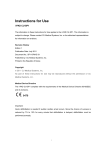

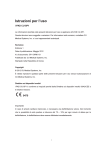
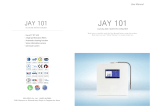
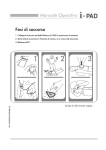
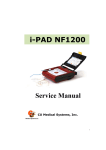
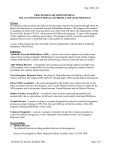
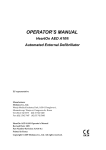
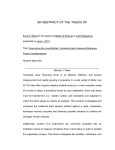


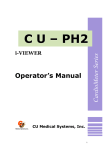

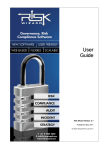
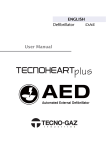
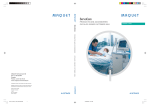
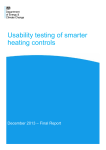
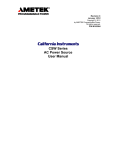
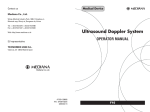

![Expanding Grain Model [EGM v1.0] - Illinois Institute of Technology](http://vs1.manualzilla.com/store/data/005895685_1-bff858b86f7bc344864531d7e5f7cd87-150x150.png)
